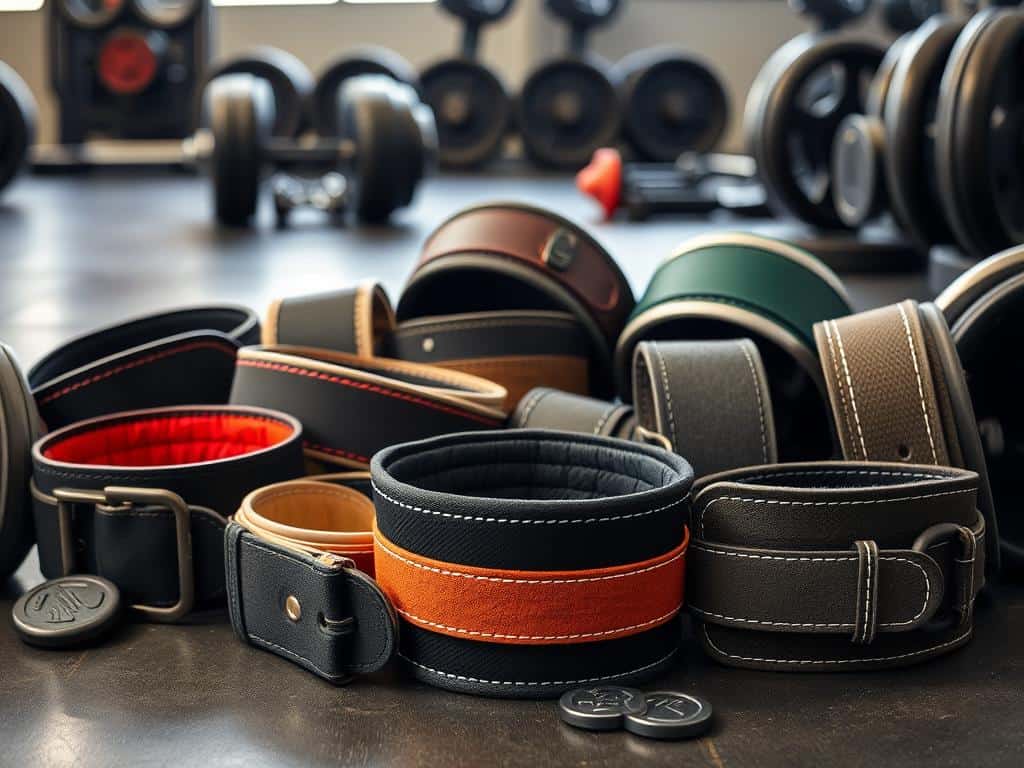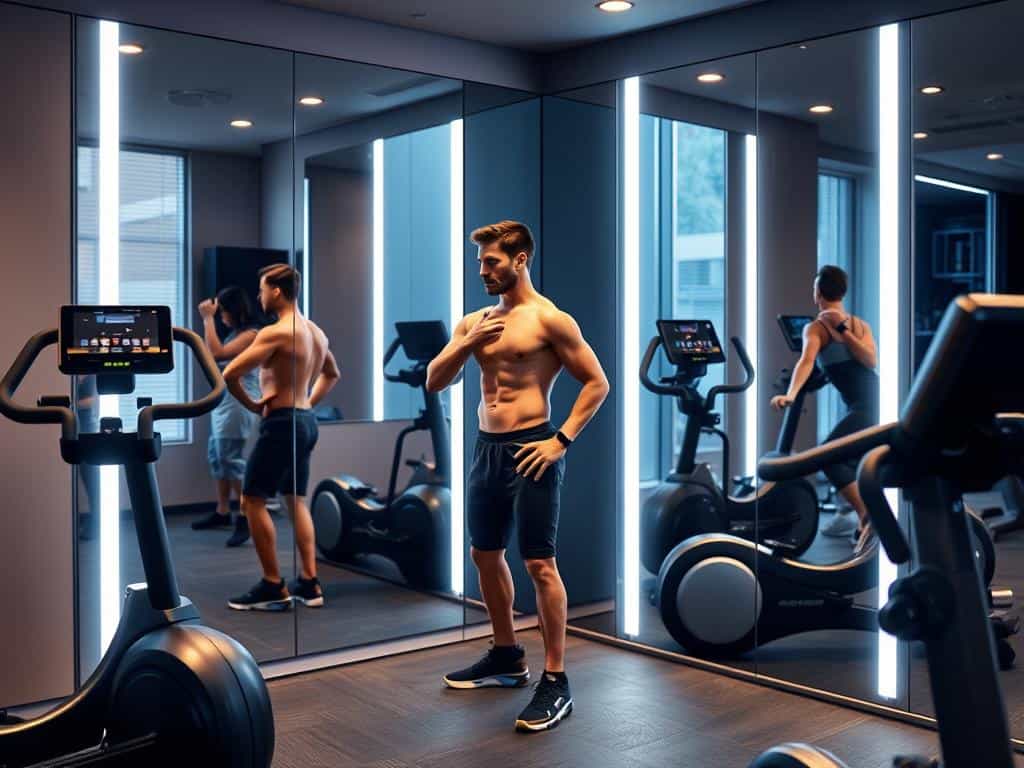Kenyan athlete Eliud Kipchoge made history by finishing a marathon in under two hours. This amazing feat was helped a lot by new running shoe technology. These advancements show how important good athletic footwear is. They also show how it can push human limits and improve an athlete’s performance.
Now, running shoes do more than protect your feet. They are designed to cut down on the energy you use when you run. This helps runners do better and more easily. Brands like Nike and Adidas put a lot of work into making shoes that fit each runner’s needs. They use lighter materials and new kinds of cushioning. This makes running a better experience for everyone, no matter the distance.
Next up, I’ll dive into the top tech breakthroughs in running shoes. I’ll show how they boost performance and lower the chance of getting hurt. This will change how we think about sports shoes forever.
Key Takeaways
- The sub-two hour marathon by Eliud Kipchoge showcases the impact of running shoes tech on performance.
- Modern athletic footwear is designed for reduced energy expenditure, improving running efficiency.
- Major brands focus on innovative materials and customization for runners’ diverse needs.
- Testing running shoes involves engineering assessments that affect performance and health.
- The future of shoes may lean towards sustainability and personalized designs for individual runners.
The Evolution of Running Shoes Tech
Running shoes have evolved a lot, thanks to innovation and better performance goals. Over time, we’ve seen big changes in shoe tech, driven by what athletes need. Brands like Reebok and New Balance have made crucial contributions, transforming how running shoes look and work.
Historical Overview of Running Footwear
Running shoes go way back, over two hundred years. The first kind from 1865 had spikes for cross-country running. Later, brands like Reebok and New Balance came up, bringing new designs for better use. New Balance made shoes more comfortable in the 1950s by offering different widths.
Key Milestones in Shoe Technology Development
In the 1970s, shoes got a big upgrade with air-infused foam. This made them more comfortable and better for running. The same time saw more people running marathons. This pushed the need for new shoe tech. Mizuno’s Wave Rider impressed many in the 1990s with its design. Puma also introduced the DISC SYSTEM, which got rid of traditional laces.
Transition from Basic Designs to Modern Innovations
Lately, shoe tech has gotten even more advanced. Now, we have carbon plate tech for stability and materials that return energy to runners. Nike’s Flyknit and Adidas’s Boost are leading with lightweight, supportive shoes. Also, brands are using eco-friendly materials, showing care for the environment. Saucony and On Running keep focusing on high-tech for better performance.
Innovations Enhancing Performance
In the world of running, technology boosts performance. Innovations like cushioning, energy return, and custom shoes change how runners train and compete.
Cushioning Technology and Its Benefits
Cushioning in shoes has changed the game. Hoka One One introduces plush midsoles that ease joint stress. On Cloud shoes use CloudTec®, giving a floaty feel. This makes running comfortable and reduces injury risks.
Energy Return Systems in Running Shoes
Energy return systems help runners be more efficient. Shoes with carbon-fiber plates boost speed and lessen tiredness. The Speedboard™ in On Cloud shoes aids in faster running. These technologies push athletes to excel.
Custom Fit Technologies for Personalized Support
Custom-fit shoes cater to each runner’s needs. Altra and Topo Athletic focus on natural foot shapes. Smart shoes with Bluetooth insoles give feedback for improvements. This custom fitting increases comfort and helps avoid injuries.

Running Shoes Tech: Impact on Injury Prevention
New shoe technology helps lessen running injuries. Learning about biomechanics in footwear helps makers design better shoes. These shoes improve how we balance and align our bodies, preventing common injuries.
Biomechanics and Shoe Design
The link between biomechanics in footwear and stopping injuries is key. Shoes built on biomechanics focus on your foot’s movement while you run. This leads to shoes that support the foot’s natural motion, absorb shocks well, and transfer energy efficiently. The right midsole helps lower the impact forces that may cause harm.
Stability and Support Features in Modern Shoes
Stability in running shoes involves parts like arch support. These features help runners keep the correct posture. They minimize the risks from overpronation. Now, shoes offer both cushioning and stability to suit varied running styles, keeping comfort in mind.
The Importance of Proper Fit for Injury Reduction
Finding the right shoe size is crucial for injury prevention running shoes. Enough toe space reduces blisters and discomfort. Runners need to think about their foot shape and how they run when choosing shoes. Not doing so can cause instability and injuries. Nowadays, brands adjust shoes for different runners, providing better support.
Conclusion
The world of athletic footwear has dramatically changed. This is due to major advances in running shoe technology. As someone who enjoys running, whether casually or competitively, I see how important these innovations are. They help in choosing the right shoes for my needs.
The road ahead for running shoes is filled with potential. New materials and a focus on eco-friendly methods are shaping the future. For instance, shoes like the Nike Vaporfly 4% have proven to boost marathon times. This shows that tech can give athletes an extra advantage.
But this rise in technology leads to debates over fairness and keeping sports true to their essence. Not every athlete has access to these high-tech shoes. This situation sparks discussions on equality within sports.
Keeping up with new developments in running shoe technology is essential for me. It allows me to choose footwear wisely, improving my performance and minimizing injury risks. With continuous innovation, the future of running shoes promises to keep athletes at the edge of technological advancements. It makes sure the competitive spirit stays alive.



